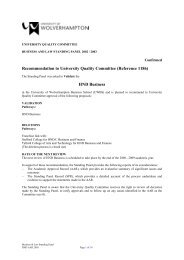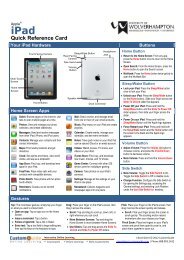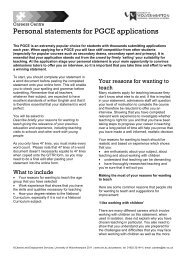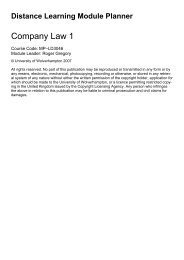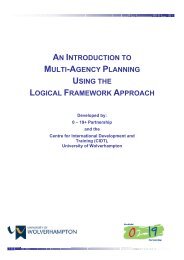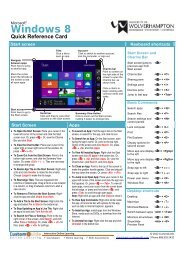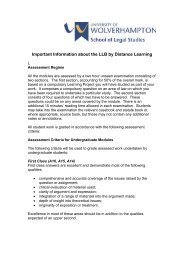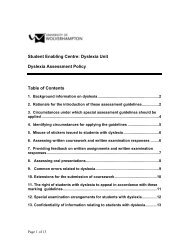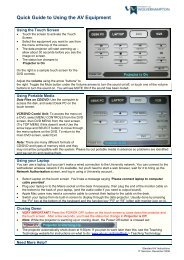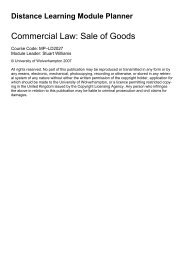This activity can be found in Pretty et al, (1995) - University of ...
This activity can be found in Pretty et al, (1995) - University of ...
This activity can be found in Pretty et al, (1995) - University of ...
- No tags were found...
You also want an ePaper? Increase the reach of your titles
YUMPU automatically turns print PDFs into web optimized ePapers that Google loves.
HO 05 BSG2.2Communicat<strong>in</strong>g withdifferent stylesWith Browns, try NOT to:• Ramble on or waste time• Build a person<strong>al</strong> relationship unless they<strong>in</strong>itiate it.• Be disorganized and messy.• Leave loop holes or cloudy issues.• Ask rh<strong>et</strong>oric<strong>al</strong> or unanswerable questions.• Come with pred<strong>et</strong>erm<strong>in</strong>ed decisions. Don’tmake decisions for them.• Speculate wildly or <strong>of</strong>fer unsubstantiatedguarantees.• L<strong>et</strong> your disagreements reflect on themperson<strong>al</strong>ly.• Re<strong>in</strong>force your agreement with “I’m with you.”They usu<strong>al</strong>ly don’t care.• Direct them around. They will re<strong>be</strong>l.With Greens, try NOT to:• Be disorganized or messy.• Be casu<strong>al</strong>, <strong>in</strong>form<strong>al</strong> or loud.• Rush the decision mak<strong>in</strong>g process.• Fail to follow through.• Waste time.• Leave th<strong>in</strong>gs to chance.• Provide person<strong>al</strong> <strong>in</strong>centives.• Threaten, cajole, wheedle, coax or wh<strong>in</strong>e.• Use someone’s op<strong>in</strong>ion as evidence.• Be manipulative.With Browns, try TO:• Be brief, and to the po<strong>in</strong>t. Use time efficiently.• Stick to bus<strong>in</strong>ess.• Come prepared.• Plan your presentation to present <strong>al</strong>l the factscleanly and logic<strong>al</strong>ly.• Ask specific questions.• Provide <strong>al</strong>ternative solutions and l<strong>et</strong> themmake the decision.• If you disagree, take issue with the facts andnot the person.• If you agree, support the results and theperson.• After t<strong>al</strong>k<strong>in</strong>g bus<strong>in</strong>ess, leave quickly, don’tl<strong>in</strong>ger.With Greens, try TO:• Prepare your case <strong>in</strong> advance. Be as accurateas you <strong>can</strong> <strong>be</strong>.• Be direct – stick to bus<strong>in</strong>ess.• Present specifics and do what you say you <strong>can</strong>do.• Take your time, but <strong>be</strong> persistent.• Draw up a scheduled approach to any actionplans.• Follow through if you agree.• Make an organized presentation <strong>of</strong> yourposition if you disagree.• Be accurate and re<strong>al</strong>istic. Give them time toverify that you are reliable.• Provide practic<strong>al</strong>, tangible evidence.• Provide guarantees over a long period <strong>of</strong> time,but give options.Based on an <strong>activity</strong> <strong>in</strong>troduced by Paul Shapiro (1997)51 Jamaica All Age Schools Project: Facilitator Tra<strong>in</strong><strong>in</strong>g for School Based Resource Teachers



